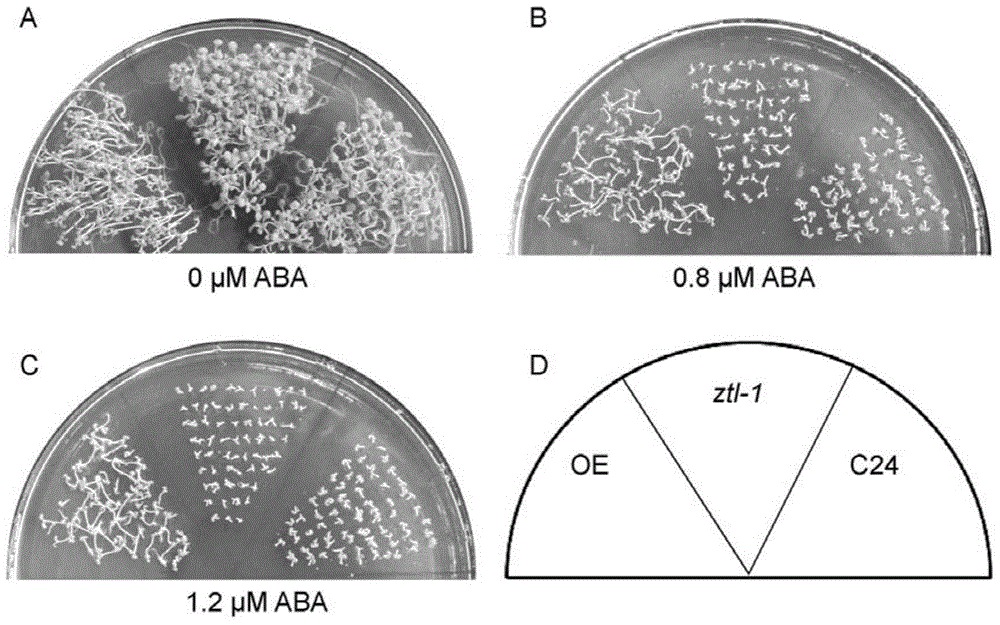Application of ZTL protein and coding gene thereof to regulating and controlling ABA tolerance of plant
A technique for encoding genes and transgenic plants, which is applied in the application field of ZTL protein and its encoding genes in regulating plant tolerance to ABA, can solve the problems of no biological clock function, etc., and achieve the effect of improving genetic characteristics
- Summary
- Abstract
- Description
- Claims
- Application Information
AI Technical Summary
Problems solved by technology
Method used
Image
Examples
Embodiment 1
[0055] Embodiment 1, the acquisition and identification of ZTL transgenic plants
[0056] The ZTL gene involved in this example is derived from Arabidopsis thaliana, and its sequence in the Arabidopsis genome is shown in sequence 1 in the sequence table, sequence 1 consists of 3164 nucleotides, of which the 416th Position -1245 is an intron sequence; the cDNA sequence of the ZTL gene is shown in sequence 2 in the sequence table, and sequence 2 is composed of 2334 nucleotides, wherein the 171-2000th position is a coding sequence (ORF); sequence 1 Both Sequence 2 and Sequence 2 encode the protein shown in Sequence 3 in the Sequence Listing, and Sequence 3 consists of 609 amino acid residues.
[0057] 1. Construction of recombinant expression vector pRTL2-ZTL
[0058] The total RNA of Arabidopsis wild-type (C24 ecotype) was extracted, and cDNA was obtained after reverse transcription. Using the obtained cDNA as a template, carry out PCR amplification with primer 1 and primer 2,...
Embodiment 2
[0108] Example 2, ZTL transgenic plant tolerance analysis test to ABA
[0109] ABA can inhibit the growth of plant seedlings. With the increase of exogenous ABA concentration, the inhibition of Arabidopsis wild type (C24 ecotype) was enhanced, and the growth of its main root and leaves would be affected to varying degrees. The experiment was repeated three times.
[0110] 1. Seedling growth experiment
[0111] With Arabidopsis wild-type (C24 ecotype), the ZTL gene point mutant ztl-1 and the T 3 The generation homozygous ZTL transgenic line OE, and the control plant obtained in Example 1 transformed into the pRTL2 empty vector were used as experimental materials. The seeds of each experimental material were sown on MS medium containing different concentrations of ABA (0 μM, 0.8 μM and 1.2 μM) (80-100 seeds were sown for each experimental material). After 3 days of low-temperature stratification at 4°C, they were moved into a light incubator, and the growth of each Arabidops...
PUM
 Login to View More
Login to View More Abstract
Description
Claims
Application Information
 Login to View More
Login to View More - R&D
- Intellectual Property
- Life Sciences
- Materials
- Tech Scout
- Unparalleled Data Quality
- Higher Quality Content
- 60% Fewer Hallucinations
Browse by: Latest US Patents, China's latest patents, Technical Efficacy Thesaurus, Application Domain, Technology Topic, Popular Technical Reports.
© 2025 PatSnap. All rights reserved.Legal|Privacy policy|Modern Slavery Act Transparency Statement|Sitemap|About US| Contact US: help@patsnap.com



